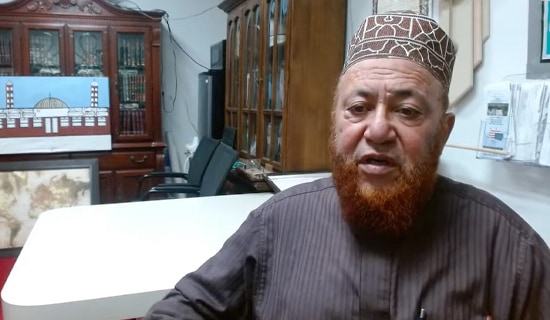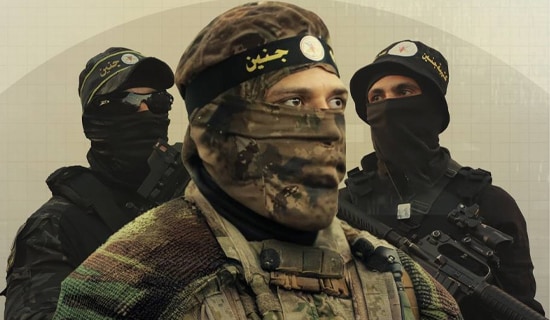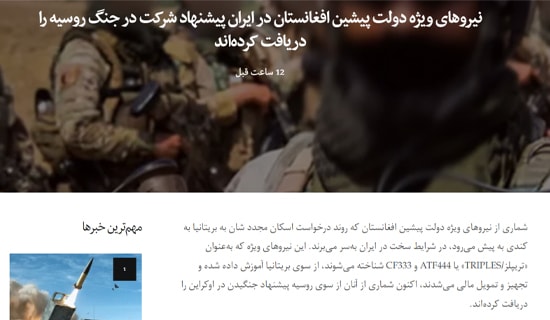Introduction
The following analysis is the second in a series which discusses the Iranian nuclear deal and examines the JCPOA as a legal document from an American perspective. This analysis will identify and explain various loopholes and their consequences in the JCPOA. Loopholes are common in the JCPOA and occur most often in the form of a prohibition or provision set forth in clear terms, followed by a statement or paragraph either negating or providing a possible alternative to the stated prohibition or provision. The decision to negate or to provide a possible alternative is dependent on the Joint Commission. In making so much dependent on the Joint Commission, the JCPOA has been turned into a provisional document which stands to be altered by the Joint Commission at its discretion. This analysis will also draw on United Nations Security Council Resolution (UNSCR) 2231 which endorsed the JCPOA for reference. It does not intend to be an overall assessment of the deal.
Nuclear Activity "Suitable For The Development Of A Nuclear Explosive Device" Could Be Allowed
If there is any area in the JCPOA where prohibitions should be absolute, it should be the section regarding the development of nuclear weapons since the reason for the whole agreement is - as per statements by President Obama and Secretary Kerry - to prevent nuclear weapons development.[1] However, the JCPOA provides alternatives even to this provision.
Under the JCPOA, Iran is prohibited from: "Designing, developing, fabricating, acquiring, or using multi-point explosive detonation systems suitable for a nuclear explosive device" as well as from "Designing, developing, fabricating, acquiring, or using explosive diagnostic systems (streak cameras, framing cameras and flash x-ray cameras) suitable for the development of a nuclear explosive device"[2]
However, the abovementioned provisions prohibiting any activity with systems suitable for nuclear weapons disappear if the Joint Commission approves the activities for "non-nuclear purposes" and provided that they are "subject to monitoring."[3] There are many ways to take advantage of this loophole: for example, even if the Joint Commission declares that a certain activity is subject to monitoring, that does not necessarily mean that Iran will allow the IAEA to monitor said site if it "interferes with Iranian military or other national security activities."[4]
Re-Imposition Of Sanctions Will Not Apply To Contracts Signed After JCPOA Implementation, Iran Views Re-Imposition Of Sanctions As Grounds To Withdraw - Unresolved Contradiction In The JCPOA
The re-imposition of sanctions should Iran violate the JCPOA may be circumvented. The JCPOA states that if the Security Council decides to re-impose sanctions, "these provisions would not apply with retroactive effect to contracts signed between any party and Iran or Iranian individuals and entities prior to the date of application, provided that the activities contemplated under and execution of such contracts are consistent with this JCPOA and the previous and current UN Security Council resolutions."[5] This means that Iran can sign as many new contracts as possible between the time when sanctions are lifted and when they are (potentially) re-imposed, because those contracts will be grandfathered as long as they are within the limitations of the JCPOA. This clause effectively weakens the prospect of re-imposing sanctions: if Iran signs enough new contracts before sanctions are re-imposed, then those sanctions will be meaningless because they will not apply to the new contracts.
Iran, for its part, has explicitly stated in the JCPOA that, "it will treat such a re-introduction or re-imposition of the sanctions specified in Annex II, or such an imposition of new nuclear-related sanctions, as grounds to cease performing its commitments under this JCPOA in whole or in part."[6] This is a loophole in and of itself: if Iran will withdraw upon re-imposition of sanctions, then the sanctions are meaningless.
The JCPOA is inherently flawed because of this contradiction regarding Iran's declared position on sanctions. One of the most important safeguards that has been stressed by the negotiating team while defending the agreement is that if Iran violates the JCPOA, sanctions will be quickly re-imposed. President Obama himself has framed this provision in the context that Iran will be incentivized to remain within the boundaries of the JCPOA in order to maintain sanctions relief.[7] However, because of the inclusion in the JCPOA that Iran openly regards any re-imposition of sanctions as grounds to withdraw from the agreement, this safeguard is invalidated.
Keeping Arms Embargo For 5 Years Does Not Exist In JCPOA, Only Referenced In UNSCR 2231
Contrary to what many analyses of the JCPOA have reported, there is no mention of keeping the arms embargo for 5 years in the JCPOA. The only time it is mentioned is in UNSCR 2231.[8] UNSCR 2231 also notes, "The provisions of this Resolution do not constitute provisions of this JCPOA."[9] Therefore, violating the Resolution is not the equivalent of violating the JCPOA, and Iran does not necessarily have to wait 5 years before trading arms to stay within the limits of the JCPOA. Deputy Foreign Minister of Iran Abbas Araghchi affirmed this in an interview on July 20, 2015 by stating that even if Iran did not abide by UNSCR 2231 and traded arms before the 5-year limit, such a violation would not be tantamount to violating the JCPOA.[10]
Accumulation Of Enriched Uranium Could Be Greater Than 300 kg, Not All Enriched Uranium Monitored By IAEA
Although the JCPOA stipulates that Iran will only be allowed to have 300 kg of enriched uranium for 15 years, there are loopholes which actually allow for a much greater amount of enriched uranium to accumulate: "Russian designed, fabricated and licensed fuel assemblies for use in Russian-supplied reactors in Iran do not count against the 300 kg UF6 stockpile limit."[11] This provision may seem trivial because it is very clear that the fuel is to be used only in Russian-supplied reactors. However, the following provisions are not as clear.
The JCPOA further states that enriched uranium coming from sources outside Iran "which are certified by the fuel supplier and the appropriate Iranian authority to meet international standards"[12] will not count toward the 300 kg limit and furthermore will be left unchecked by the Joint Commission and/or the IAEA. The JCPOA does not account for Iran receiving fuel from a country that may not comply with international standards, nor does it account for the fact that Iran itself may not comply with international standards if left unmonitored.
Contrastingly, the JCPOA makes it a point to declare that enriched uranium and products produced within Iran will be closely monitored and inspected, and will not count against the 300 kg limit only in the case that they are declared safe from being converted to UF6.[13] While it is important to monitor the substances coming from within Iran, there is a gaping loophole through which Iran could potentially acquire much more than its designated 300 kg of enriched uranium from outside sources.
TRR Fuel For R&D At Necessary High Level Enrichment Could Be Permitted Before 15-Year Limit, Additional Fuel To Be Made Available To Iran As Needed
The Tehran Research Reactor (TRR) is monitored by the IAEA and has been operating using low-enriched uranium (LEU) since 1993. However, even while under supervision, Iran conducted "undeclared plutonium experiments and polonium production" in the early 1990s, both of which materials are used to develop nuclear weapons. Iran denied allegations of using the materials with the intent to create nuclear weapons and instead claimed to be using them for peaceful purposes.[14]
Under the JCPOA, Iran is prohibited from producing or conducting R&D on plutonium or uranium metals or their alloys for 15 years.[15] This R&D involves enriching uranium higher than the permitted 3.67%. However, the JCPOA simultaneously presents a loophole to circumvent this provision by saying, "If Iran seeks to initiate R&D on uranium metal based TRR fuel in small agreed quantities after 10 years and before 15 years, Iran will present its plan to, and seek approval by, the Joint Commission."[16] Iran will also be able to acquire additional fuel for the TRR from the international market as needed.[17] These two loopholes open the way for Iran to continue experiments similar to those conducted in the 1990s, even while under the supervision of the IAEA as before. At the very least, Iran will be able to acquire such necessary material to be able to develop its nuclear capabilities after the termination of the JCPOA.
New Centrifuges Could Proceed To Prototype Stage Prior To 10-Year Limit
Iran will continue to conduct R&D on its centrifuges through computer modeling and simulations, but is not allowed to test any models for 10 years.[18] However, the JCPOA states, "For any such project to proceed to a prototype stage for mechanical testing within 10 years, a full presentation to, and approval by, the Joint Commission is needed."[19] It is thus fully possible for Iran to continue developing its centrifuge capabilities if approved by the Joint Commission. This, in turn, will speed up their nuclear development and serve as preparation for the years after the termination of the JCPOA.
Timeframe For Resolving Issues Of Contention Could Be More Than 30 Days
The JCPOA states that if Iran or any of the E3/EU+3 are not meeting their commitments, the issue can be presented to the Joint Commission and a resolution should be expected within 15 days "unless the time period was extended by consensus." Similarly, if the Joint Commission cannot present a solution, the issue can be referred to the Ministers of Foreign Affairs for a resolution within 15 days unless, again, "the time period was extended by consensus."[20] These time extensions provide ample time for delay, especially if Iran is attempting to prevent inspection of suspicious sites, military or otherwise.
*Y. Carmon is President and Founder of MEMRI.
[1] President Obama said in an interview with Tom Friedman of The New York Times on July 14, 2015, "We are measuring this deal ÔÇö and that was the original premise of this conversation, including by Prime Minister Netanyahu ÔÇö Iran could not get a nuclear weapon. That was always the discussion. And what I'm going to be able to say, and I think we will be able to prove, is that this by a wide margin is the most definitive path by which Iran will not get a nuclear weapon, and we will be able to achieve that with the full cooperation of the world community and without having to engage in another war in the Middle East." See link for full text: http://www.nytimes.com/2015/07/15/opinion/thomas-friedman-obama-makes-his-case-on-iran-nuclear-deal.html
[2] "Iran will not engage in the following activities which could contribute to the development of a nuclear explosive device: Designing, developing, fabricating, acquiring, or using multi-point explosive detonation systems suitable for a nuclear explosive device, unless approved by the Joint Commission for non-nuclear purposes and subject to monitoring. Designing, developing, fabricating, acquiring, or using explosive diagnostic systems (streak cameras, framing cameras and flash x-ray cameras) suitable for the development of a nuclear explosive device, unless approved by the Joint Commission for non-nuclear purposes and subject to monitoring." JCPOA, Annex I, Article T, Paragraph 82. See link for full text: http://apps.washingtonpost.com/g/documents/world/full-text-of-the-iran-nuclear-deal/1651/
[3] See Footnote 2.
[4] See MEMRI Report 1177: http://www.memri.org/legacy/report/8676
[5] JCPOA, Section I, Article C, Paragraph 37. See Footnote 2 for link to text.
[6] JCPOA, Section I, Article C, Paragraph 26. See Footnote 2 for link to text.
[7] President Obama said in his initial remarks on the Iran deal on July 14, 2015, "All of this [the specific terms with which Iran will have to comply to have the sanctions lifted] will be memorialized and endorsed in a new United Nations Security Council resolution. And if Iran violates the deal, all of these sanctions will snap back into place. So there is a very clear incentive for Iran to follow through and there are very real consequences for a violation." See link for full text: http://www.nytimes.com/aponline/2015/07/14/us/ap-us-obama-iran-nuclear-talks-text.html?_r=1
[8] UNSCR 2231, Annex B, Paragraph 5.
The fact that the arms embargo is only mentioned here was referenced by Iran's Deputy Foreign Minister Abbas Araghchi in an interview on Iranian TV Channel 2 on July 20, 2015 when he said that maintaining the restriction on arms is only mentioned in UNSCR 2231 because Iran insisted on excluding it from the JCPOA. See link for text in Farsi: http://www.isna.ir/fa/news/94042915462/%D9%85%D9%85%D9%86%D9%88%D8%B9%DB%8C%D8%AA-%D9%87%D8%A7%DB%8C-%D8%AA%D8%B3%D9%84%DB%8C%D8%AD%D8%A7%D8%AA%DB%8C-%D9%88-%D9%85%D9%88%D8%B4%DA%A9%DB%8C-%D8%A8%D9%87-%D9%85%D8%AD%D8%AF%D9%88%D8%AF%DB%8C%D8%AA-%D8%AA%D8%A8%D8%AF%DB%8C%D9%84
However, this 5 year limit could also arrive sooner: UNSCR 2231 says the arms embargo will lift 5 years after Adoption Day or "the date on which the IAEA submits a report confirming the Broader Conclusion, whichever is earlier." See link for full text: http://www.un.org/en/sc/inc/pages/pdf/pow/RES2231E.pdf
[9] UNSCR 2231, Footnote 1, Article C, Paragraph 18. See Footnote 8 for link to text.
[10] This was stated in the same interview cited in Footnote 8 by Deputy Foreign Minister Araghchi, who said, "In the Iranian Foreign Ministry statement, it was said explicitly that Iran does not attach any legitimacy to any restriction or to any threat, whether past or future, by the Security Council. If UNSCR 2231 will be violated by Iran, it will be a violation of the Resolution only, not of the JCPOA. As it happened 10 years ago, we violated Security Council resolutions, and nothing happened. The JCPOA and UNSCR 2231 are two separate documents."
[11] JCPOA, Annex I, Article J, Paragraph 59. See Footnote 2 for link to text.
[12] "Enriched uranium in fabricated fuel assemblies from other sources outside of Iran for use in Iran's nuclear research and power reactors, including those which will be fabricated outside of Iran for the initial fuel load of the modernised Arak research reactor, which are certified by the fuel supplier and the appropriate Iranian authority to meet international standards, will not count against the 300 kg UF6 stockpile limit." JCPOA, Annex I, Article J, Paragraph 59. See Footnote 2 for link to text.
[13] "Enriched uranium in fabricated fuel assemblies and its intermediate products manufactured in Iran and certified to meet international standards, including those for the modernised Arak research reactor, will not count against the 300 kg UF6 stockpile limit provided the Technical Working Group of the Joint Commission approves that such fuel assemblies and their intermediate products cannot be readily converted into UF6." JCPOA, Annex I, Article J, Paragraph 59. See Footnote 2 for link to text.
[15] "For 15 years, Iran will not engage in producing or acquiring plutonium or uranium metals or their alloys, or conducting R&D on plutonium or uranium (or their alloys) metallurgy, or casting, forming, or machining plutonium or uranium metal." JCPOA, Annex I, Article E, Paragraph 24. See Footnote 2 for link to text.
[16] JCPOA, Annex I, Article E, Paragraph 26. See Footnote 2 for link to text.
[17] "All remaining uranium oxide enriched to between 5% and 20% will be fabricated into fuel for the Tehran Research Reactor (TRR). Any additional fuel needed for the TRR will be made available to Iran at international market prices." JCPOA, Section I, Article A, Paragraph 7. See Footnote 2 for link to text.
[18] JCPOA, Annex I, Article G, Paragraph 43. See Footnote 2 for link to text.
[19] See Footnote 18.
[20] JCPOA, Section I, Article C, Paragraph 36. See Footnote 2 for link to text.





